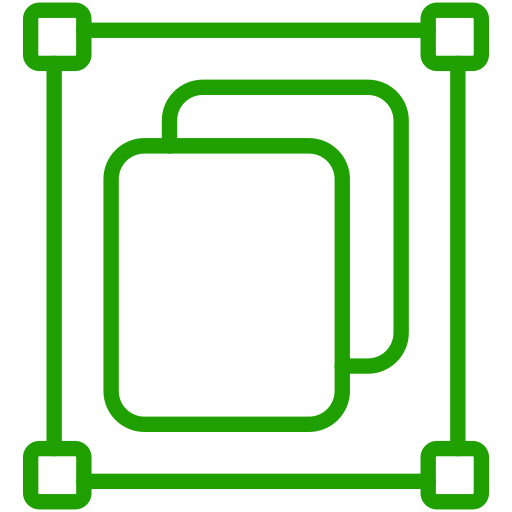- +971 54 313 9696 (24x7)
- +971 55 721 9696
- +966 53 282 4882(24x7)
- contact@envirolink.me
- +966 53 282 4882 (24x7)
- contact@envirolink.me
Please fill out the form below, and we’ll get back to you to schedule your free initial consultation.
Environmental Product Declaration (EPD) Certification is vital for companies across the UAE and Saudi Arabia providing a comprehensive evaluation of the environmental impacts associated with products through their entire lifecycle. Companies use EPDs to demonstrate transparency, build consumer trust, enhance market competitiveness, and comply with local and international sustainability standards.
An Environmental Product Declaration (EPD) is a standardized, independently verified report detailing the environmental impacts of a product from raw material extraction through manufacturing, transportation, usage, and disposal. Utilizing Life Cycle Assessments (LCAs), EPDs offer precise data enabling stakeholders to make informed decisions based on reliable environmental information.
EPDs help companies across the Middle East meet consumer demands for transparency and sustainability, aligning with governmental sustainability initiatives and global environmental standards.
EPDs follow international ISO standards to ensure consistency, accuracy, and comparability. The primary standards include:
ISO 14025:
Guidelines for developing and communicating EPDs, emphasizing transparency and comparability.
ISO 14040 and ISO 14044:
Provide detailed guidelines on conducting Life Cycle Assessments (LCA), ensuring thorough and credible environmental impact analyses.
Compliance with these standards allows companies to demonstrate credibility in markets such as Dubai, Doha, and Riyadh, meeting stringent international expectations.
EPD certification provides numerous benefits:

Distinguishes products in competitive markets by highlighting environmental performance

Meets environmental regulatory requirements, enabling entry into international and regional markets

Enhances credibility and trust with stakeholders by demonstrating sustainability commitments

Clearly communicates verified environmental data, improving stakeholder relationships
The EPD certification process involves detailed steps

Clearly outlining the product boundaries and environmental assessment objectives.

Gathering comprehensive lifecycle data

Conducting a robust environmental impact analysis according to ISO standards.

Independent third-party review to ensure accuracy and reliability.

Registering and publishing the verified EPD for public transparency and market credibility
EPD certification costs vary based on several factors:
Complexity and diversity of product categories.
Quality and availability of lifecycle data.
Extent and scope of LCA required.
Third-party verification and certification fees.
To manage costs effectively, companies should engage in thorough planning, leverage existing data efficiently, and collaborate with experienced consultants familiar with Middle Eastern regulatory landscapes.
Industries across the Middle East significantly benefit from obtaining EPD certification:
Construction and Infrastructure: Crucial for projects seeking LEED and other green building certifications.
Manufacturing Sector: Enhances compliance and boosts product appeal in sustainability-focused markets.
Consumer Goods: Strengthens consumer trust through transparent environmental impact disclosure.
Industrial Products: Provides competitive advantages during procurement and bidding processes.
Envirolink supports companies across the UAE and Saudi Arabia through the EPD certification process by:
Providing expert guidance on regional and international standards.
Offering end-to-end project management from data collection through verification.
Ensuring compliance and efficient handling of the entire certification process.
Maintaining a proven track record of successful certifications across various sectors.
EPDs include essential information such as:
Product Details: Comprehensive description of materials, components, and production methods.
Lifecycle Inventory (LCI): Detailed data on resources, energy usage, emissions, and waste generation.
Environmental Impact Categories: Metrics like carbon footprint, ozone depletion, and water consumption.
Verification and Transparency: Independent third-party verification confirming accuracy and credibility.
Unlike general eco-labels, EPDs offer detailed, quantitative data about environmental impacts rather than broad claims. EPDs provide stakeholders with precise, verified data, making them valuable for detailed product comparisons and enhancing trust and regulatory compliance in markets like UAE and Saudi Arabia.


EPDs are valid for five years, after which companies must review, update lifecycle data, conduct new LCAs, and undergo verification again to maintain accurate and current information, ensuring ongoing regulatory compliance and stakeholder confidence.
EPD certification significantly contributes to sustainability objectives by:
Companies often face challenges such as:
Proactive planning, accurate data collection, and specialized consultancy assistance can mitigate these challenges effectively.
Maintaining EPD certification requires adherence to best practices:
Effectively communicating EPD results involves:
Selecting the right consultant is crucial for successful certification. Key considerations include:
Envirolink provides comprehensive support tailored to Middle Eastern markets, ensuring companies achieve EPD certification smoothly and effectively.
The cost of EPD (Environmental Product Declaration) certification depends on several factors, including:
An EPD certificate is typically valid for five years. When it expires, the certification must be renewed through:
Yes, a single EPD can cover multiple similar products if:
EPD certification can contribute to LEED (Leadership in Energy and Environmental Design) credits under the Materials and Resources (MR) category by:
While it is possible to complete the EPD certification in-house if you have the expertise and resources, hiring a consultant is often recommended due to:
Key industries in the Middle East benefiting from EPD certification include:
Showcase your product’s sustainability with verified EPD certification. Enhance credibility, meet compliance standards, and gain a competitive edge in the market
Please fill out the form below, and we’ll get back to you to schedule your free initial consultation.
Providing environmental, sustainability, food safety and quality certification, auditing and standards development since 2007 in GCC. We support our Clients gathering Credit Claims for LEED V4, LEED V4.1, Emirates Green Building Council (UAE), Estidama Pearl rating System (Abu Dhabi – UAE), Al Sa’fat (Dubai – UAE), Global Sustainability Assessment System (GSAS), BREEAM & other Green Building & Sustainability Standards.